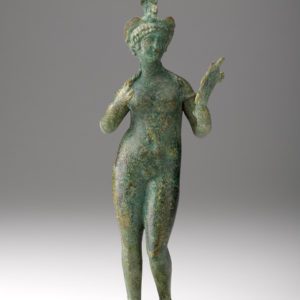Ancient Greek, Italian, and Roman

About
While not a strict chronological overview of the art of ancient Greece, Italy, and Rome, the collection does represent major developments in sculpture and stylistic differences in ceramic decoration (mostly presented by area or culture in the galleries). Visitors may note how differently the human figure has been interpreted by comparing the Cycladic Female Figurine, the Mycenaean Figurine of a Woman Holding a Child, and the Greek Torso of Aphrodite, a form later adopted by the Romans (Statue of Aphrodite Anadyomene [Cyrene Type]).
In addition to regional differences, the influence of other Mediterranean civilizations—such as ancient Egypt—is often visible in Greek, Roman or Cypriot art, attesting not only to the cultural and commercial exchanges throughout the region, but also to the Greek colonization of North Africa and Western Asia during the Hellenistic period and the vastness of the Roman Empire. In this regard, compare the Figure of a Youth from Cyprus with the Egyptian Figure of a Man, and note the Greek Hydria (probably from Egypt) as well as the Egypto-Roman statuette of Aphrodite-Isis.
Many works of art also illustrate the well-known ancient gods (Statue of Bacchus), goddesses (Minerva), and heroes (Herakles), still familiar to us thousands of years later. Learn more and go behind the scenes with the Bacchus Conservation Project.
Note: The North Carolina Museum of Art uses the designation BCE/CE (Before Common Era/Common Era) rather than BC/AD (Before Christ/Anno Domini) when dating its ancient collections that are not rooted in the Christian tradition.













